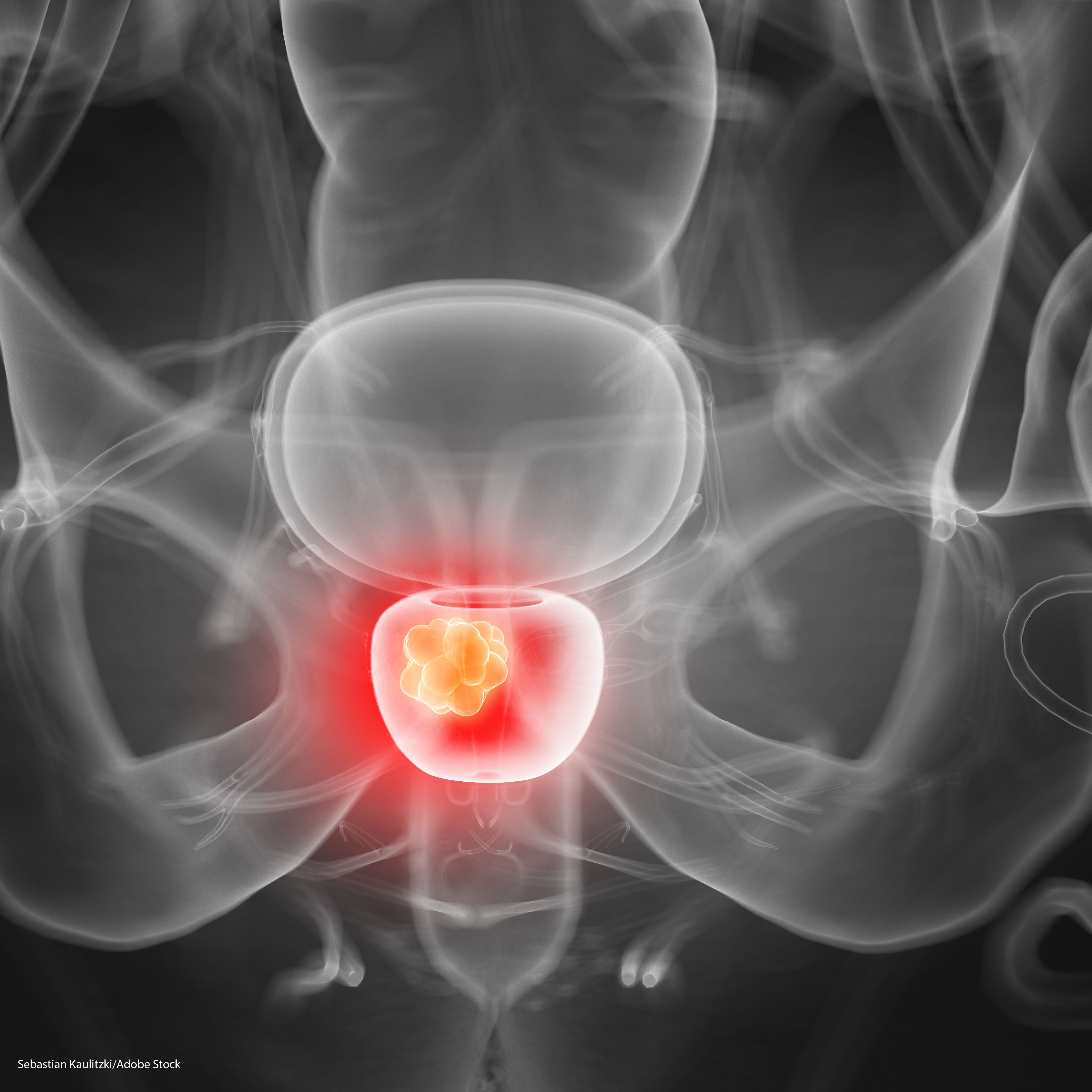Follow-Up Data Show Tazemetostat Remains Safe, Elicits Benefit in Patients With Prostate Cancer
At a median follow-up of 17.4 months, half of the enrolled patients with metastatic castration-resistant prostate cancer experienced a decrease in PSA level from baseline following treatment with tazemetostat in combination with abiraterone acetate or enzalutamide.
Updated findings from the phase 1b/2 CELLO-1 study continue to show that tazemetostat (Tazverik) remains safe and elicits benefit in patients with metastatic castration-resistant prostate cancer (mCRPC) when combined with abiraterone acetate (Zytiga) or enzalutamide (Xtandi).
As of the last follow-up, half of the enrolled patients with metastatic castration-resistant prostate cancer have experienced a decrease in PSA level from baseline following treatment with tazemetostat in combination with abiraterone acetate or enzalutamide.

The latest data from the CELLO-1 study were presented at the 2022 Society of Urologic Oncology (SUO) Annual Meeting.1
Tazemetostat is an oral small molecule inhibitor of EZH2, and, according to the CELLO-1 researchers, it is hypothesized that inhibiting EZH2 may re-sensitize tumors to overcome resistance to androgen-signaling inhibitors (ASIs), such as abiraterone and enzalutamide. Preclinical prostate cancer models have shown that reduction in tumor growth was greater with the addition of tazemetostat to abiraterone or enzalutamide compared with single-agent treatment with either ASI.
The phase 1b/2 global, open-label, randomized CELLO-1 study (NCT04179864) enrolled men aged ≥18 years with mCRPC who were previously untreated or had experienced disease progression when receiving a second-generation ASI for mCRPC.The study protocol also allowed patients to have received prior first-generation anti-androgen receptor therapy and ≤6 cycles of docetaxel for castration-sensitive disease.
Patients were treated with either tazemetostat at 800 mg twice daily plus abiraterone at 1000 mg once daily and prednisone at 5 mg twice daily, or tazemetostat escalated to 1600 mg twice daily plus enzalutamide at 160 mg daily.
Safety, tolerability, and recommended phase 2 dose (RP2D) of tazemetostat for each combination were the primary end points. Radiographic progression-free survival (rPFS) and prostate-specific antigen (PSA) decline of ≥50% (PSA50) were the key secondary end points.
At the data cutoff of June 11, 2022, there were 21 patients who had been treated. Of these patients, 7 received tazemetostat plus abiraterone/prednisone and 14 received tazemetostat plus enzalutamide.
At the time of the analysis, 1 patient was still being treated in the abiraterone/prednisone group and 2 patients were still being treated in the enzalutamide group.
Across all patients, the mean age was 74 years (range, 53-85) and patients had received a median of 3 prior lines of therapy. All patients had an ECOG performance status of 0 (n = 11) or 1 (n = 10).
The median duration of treatment was 10.0 months in the abiraterone/prednisone group and 6.9 months in the enzalutamide group.
At a median follow-up of 17.4 months, 11 (52%) of the 21 patients had experienced a decrease in PSA level from baseline, including 9 of the patients receiving tazemetostat plus enzalutamide. Of note, 7 of these 9 patients had received prior abiraterone.
Across the overall population, investigators observed PSA50 in 6 patients, comprised of 1 patient (14.3%) in the abiraterone/prednisone group and 5 patients (35.7%) in the enzalutamide group.
In the enzalutamide cohort, the median rPFS was 11.1 months and the 12-month rPFS rate was 45%. In the abiraterone group, the median rPFS and 12-month rPFS rate were 8.3 months and 29%, respectively. Overall survival data were immature at the time of the analysis.
The RP2D of tazemetostat was determined to be 1200 mg twice daily plus enzalutamide.
Regarding safety, the most common treatment-emergent adverse events (TEAEs) in the abiraterone/prednisone and enzalutamide groups across all grades were fatigue (n = 3 vs 5, respectively), constipation (n = 2 vs 3), fall (n = 4 vs 1), arthralgia (n = 3 vs 3), hypertension (n = 1 vs 4), nausea (n = 1 vs 3), peripheral edema l (n = 3 vs 1), urinary tract infection (n = 2 vs 2), anemia (n = 0 vs 3), back pain (n = 2 vs 1), decreased appetite (n = 0 vs 3), dyspepsia (n = 0 vs 3), neck pain (n = 1 vs 2), pain in extremity (n = 1 vs 2), and pyrexia (n = 1 vs 2).
Across all patients, 10 (47.6%) experienced grade 3/4 TEAEs and there were no dose-limiting toxicities in phase 1b.
“Preliminary efficacy data support proceeding to the phase 2 portion of this study,” the authors wrote in their poster conclusion.
Phase 2 of the study is specifically focusing on the efficacy and safety of tazemetostat at the RP2D of 1200 mg twice daily plus enzalutamide versus enzalutamide alone in patients with mCRPC who previously received abiraterone plus prednisone. Patient enrollment is open with a targeted accrual of 81 patients. The primary end point isrPFS.
Tazemetostat is not currently approved by the FDA for the treatment of patients with prostate cancer; however, the agent does have FDA-approved indications for epithelioid sarcoma and relapsed/refractory follicular lymphoma.
Reference
Abida W, Iannotti N, Appleman L, et al. Phase 1b update of CELLO-1: Safety and preliminary efficacy of tazemetostat in combination with abiraterone/prednisone or enzalutamide in patients with metastatic castration-resistant prostate cancer. Presented at: Society of Urologic Oncology 23rd Annual Meeting; November 30-December 2; San Diego, California. Abstract 75.